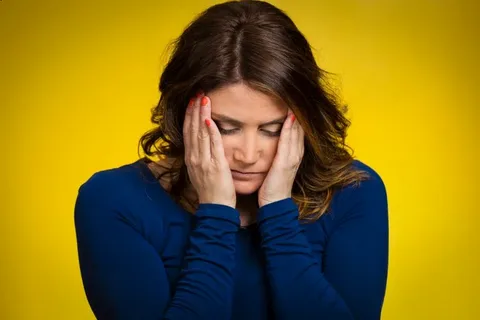The intricate cycle that arises from the strong connection between anxiety and sleep difficulties can have a substantial effect on an individual’s mental health and general well-being. Inadequate or disturbed sleep can worsen anxiety symptoms, while worry itself can cause sleep problems and disturb sleep patterns. Promoting improved mental health requires an understanding of the connection between anxiety and sleep difficulties as well as the application of methods to break this cycle. The association between anxiety and sleep disorders, common sleep disorders that are linked to anxiety, and methods for ending the cycle for improved mental health will all be covered in this article.
Recognizing the Connection Between Sleep Disorders and Anxiety
Anxiety and Sleep Disorders: Sleep abnormalities, such as trouble falling or staying asleep or having restorative sleep, are frequently associated with anxiety disorders. Anxious people may have racing thoughts, concerns, or bodily symptoms like tense muscles or a fast heartbeat that make it difficult for them to unwind and go asleep. Furthermore, nightmares or night terrors brought on by anxiety might cause sleep difficulties.
Impact of Sleep abnormalities on Anxiety
On the other hand, sleep abnormalities can make anxiety symptoms worse and play a role in the onset or aggravation of anxiety disorders. Anxiety symptoms can start or worsen as a result of chronic sleep deprivation or poor sleep quality, which can also cause increased irritability, concentration problems, a heightened stress response, and emotional dysregulation. Insufficient sleep can also negatively impact one’s ability to think clearly and make decisions, which makes it more difficult for people to handle stress and control their anxiety.
Typical Sleep Disorder Types Linked to Anxiety
Insomnia: Despite having enough opportunities to sleep, insomnia is defined by difficulties going asleep, remaining asleep, or attaining restorative sleep. Anxious people frequently have insomnia as a result of ongoing concern, ruminating, or hyperarousal that prevents them from unwinding and going to sleep. Prolonged sleeplessness can intensify anxiety symptoms and support the persistence of anxiety disorders.
Night Terrors and Nightmares:
Night terrors and nightmares brought on by anxiety can cause sleep disruptions and interrupt sleep. Rapid eye movement (REM) sleep is when nightmares happen. They are vivid, upsetting dreams that are frequently connected to unresolved worries or traumatic experiences. In contrast, night terrors are periods of extreme fear or terror that happen during non-REM sleep and may be followed by writhing, screaming, or disorientation when you wake up.
Sleep-Related Breathing problems:
Snoring and obstructive sleep apnea (OSA) are two examples of sleep-related breathing problems that can interfere with sleep, cause daytime weariness and irritability, and worsen anxiety symptoms. Recurrent bouts of partial or total upper airway blockage during sleep, or OSA, are linked to a higher risk of anxiety disorders and other mental health issues.
The neurological condition known as restless legs syndrome (RLS) is typified by an overwhelming desire to move the legs and is sometimes accompanied by unpleasant sensations like tingling, crawling, or itching. RLS can cause sleep disturbances, insomnia, and daytime weariness. These conditions can worsen anxiety symptoms and lower general quality of life.
Methods for Ending the Pattern of Sleep Issues and Anxiety
For insomnia, cognitive-behavioral therapy (CBT-I): The evidence-based treatment method known as cognitive-behavioral therapy for insomnia (CBT-I) targets the underlying behavioral and cognitive issues that lead to insomnia. While encouraging healthy sleeping habits and relaxation techniques, CBT-I focuses on changing maladaptive sleep-related behaviors and cognitive patterns, such as excessive worrying about sleep. It has been demonstrated that CBT-I is very successful at lowering anxiety symptoms and enhancing the quality of sleep.
Stress Management Strategies:
Practicing stress-reduction strategies including progressive muscle relaxation, deep breathing, mindfulness meditation, and guided imagery can help lower physiological arousal and increase relaxation, which in turn reduces anxiety symptoms and enhances the quality of sleep.
Sleep Hygiene Practices:
Adopting sound sleep hygiene practices can enhance the quality of your sleep and lessen anxiety-related sleep disruptions. This entails sticking to a regular sleep schedule, setting up a cozy sleeping space, avoiding stimulants like coffee and gadgets right before bed, and developing a calming nighttime ritual.
Exposure therapy is a behavioral strategy used to treat nightmares. It entails exposing patients to frightening stimuli or situations progressively, methodically, and under control. Over time, exposure therapy can help desensitize sufferers of anxiety-related nightmares or night terrors to their worries and lessen the frequency and severity of their dreams.
Treatment for Underlying Sleep Disorders:
Improving sleep quality and lowering anxiety symptoms require treating underlying sleep disorders such obstructive sleep apnea, restless legs syndrome, or circadian rhythm abnormalities. This may entail pharmaceutical treatments for RLS, light therapy for disturbances of the circadian rhythm, or continuous positive airway pressure (CPAP) therapy for OSA.
In summary
A person’s mental health and general well-being can be greatly impacted by the intricate cycle that anxiety and sleep difficulties create. Promoting improved mental health requires an understanding of the connection between anxiety and sleep problems, identification of common types of anxiety-related sleep disorders, and application of techniques for ending the cycle. People can improve their general well-being, lessen their symptoms of anxiety, and get better sleep by treating underlying sleep disorders, fostering healthy sleep habits and relaxing techniques, and addressing the underlying cognitive and behavioral variables that contribute to sleep disruptions.

